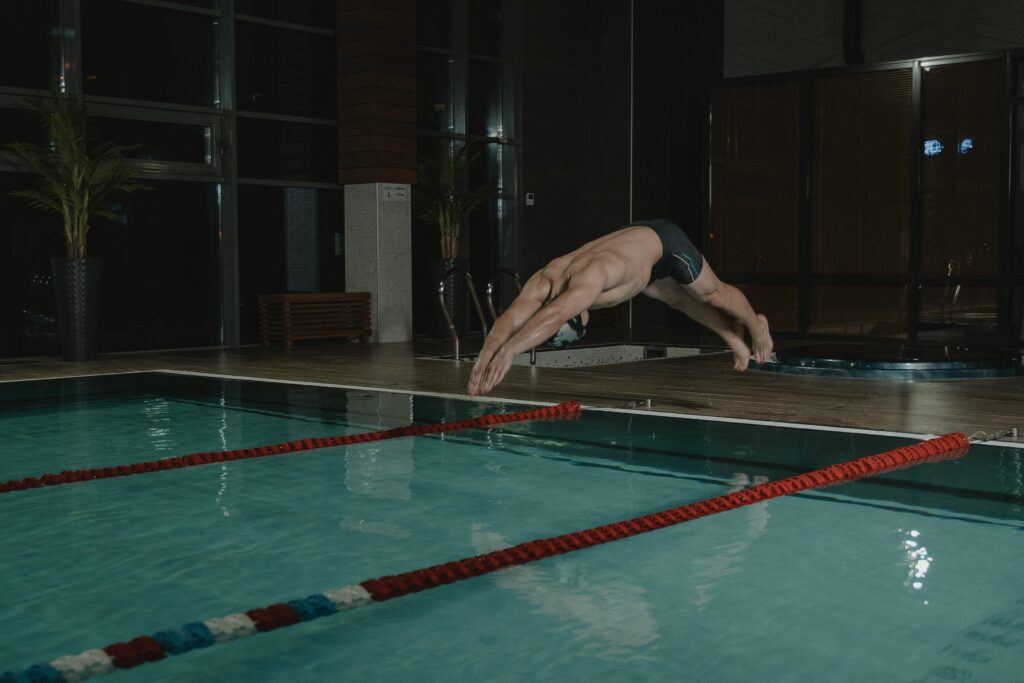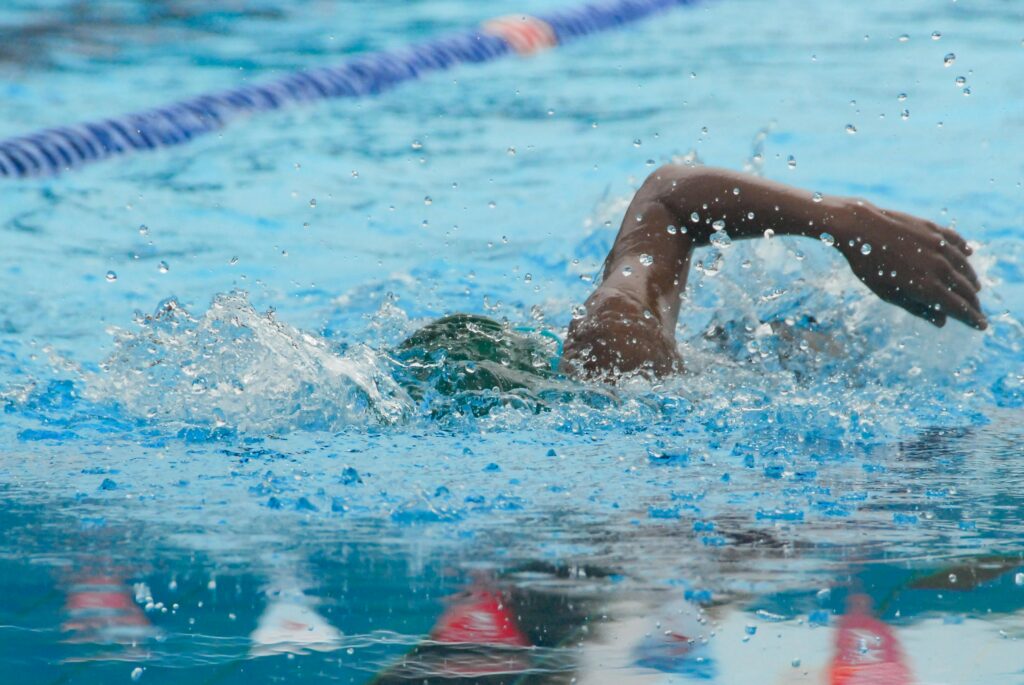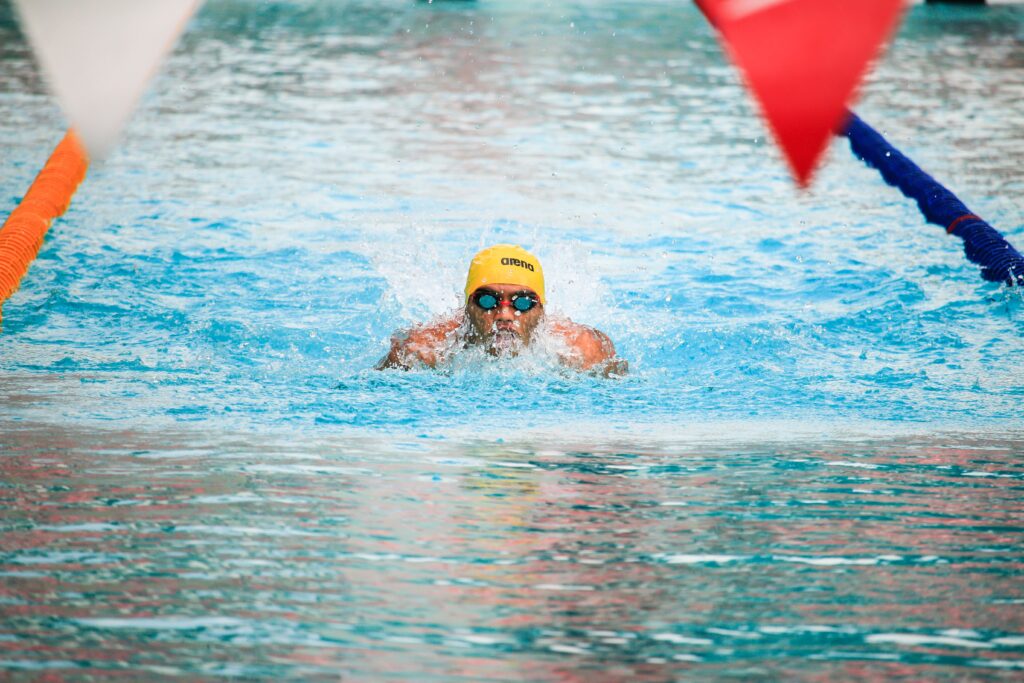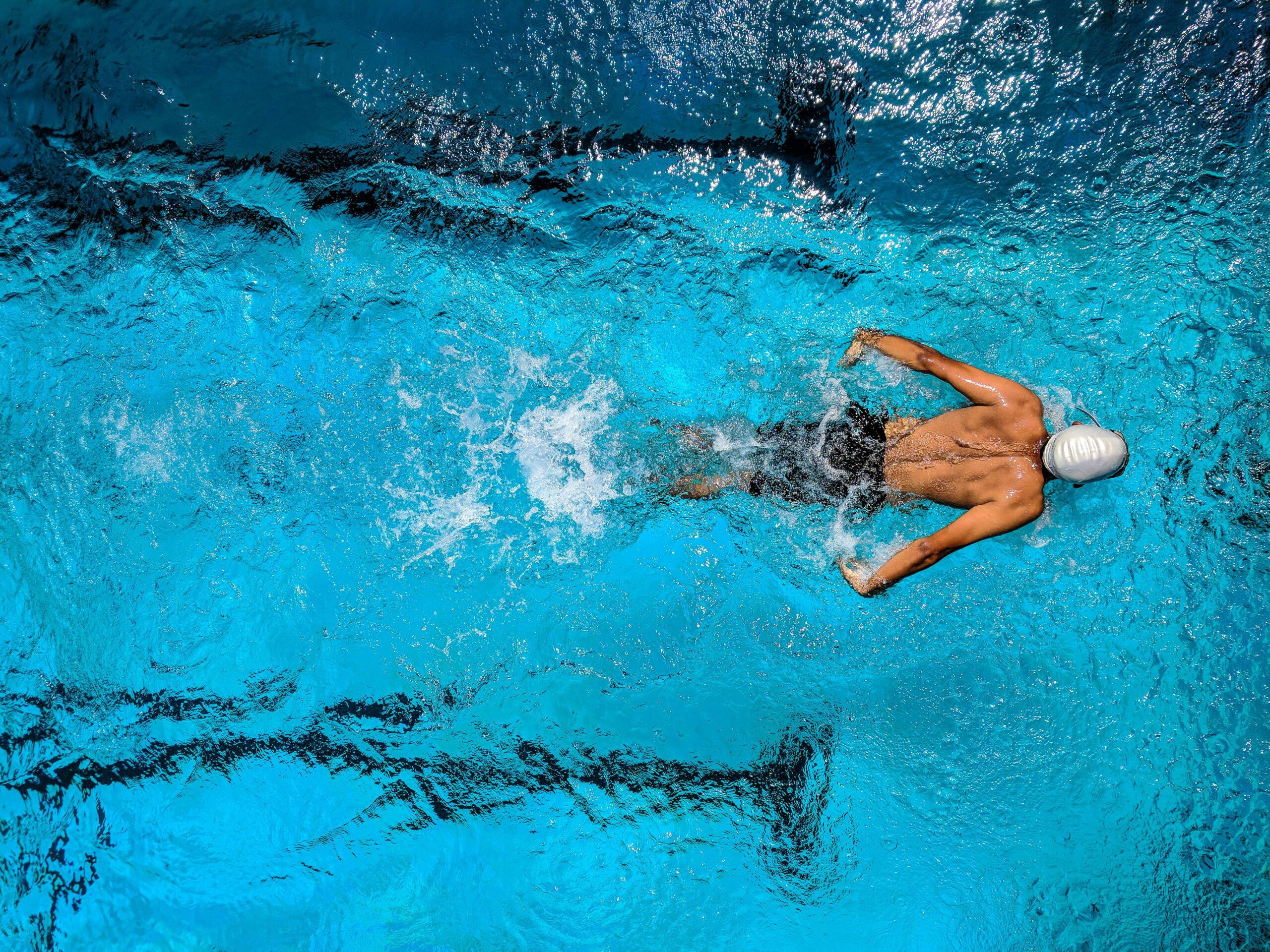In the realm of fitness, swimming often takes the spotlight for its refreshing and low-impact nature. However, beneath the surface lies a secret powerhouse – swimming isn’t just about gliding through water; it’s a dynamic exercise that holds the key to substantial muscle development.
While many recognize the cardiovascular benefits of swimming, the focus on its remarkable potential to build and tone muscles is often overshadowed. In this exploration, we will dive deep into the often-overlooked realm of how swimming transforms not only your endurance but your physique. It’s time to redefine the narrative surrounding swimming from a mere recreational activity to a potent tool for comprehensive muscle building.
As we embark on this aquatic journey, it’s crucial to understand that swimming is not a one-dimensional exercise. It’s not merely about laps swum or strokes executed; it’s a collection of movements that engages muscles from head to toe. The magic lies in the interplay between the human body and the resistance of water, creating an environment that challenges and sculpts in ways unparalleled by traditional exercises.
The science of swimming’s muscle engagement is fascinating. It’s a full-body workout where arms, shoulders, core, back, and legs work in harmony, each stroke activating a unique set of muscles. The water’s resistance, often underestimated, becomes the tool for muscular transformation, requiring effort and control.
Moreover, swimming’s benefits extend beyond just muscle building. It enhances flexibility, promotes joint mobility, and offers a low-impact alternative for individuals seeking an effective workout without subjecting their bodies to the stress of high-impact exercises.
In the sections that follow, we will unravel the intricacies of swimming as a muscle-building powerhouse. From understanding the science behind muscle engagement to exploring stroke-specific benefits and structured swim training, we aim to equip you with a comprehensive understanding of how swimming can be your gateway to a stronger, more sculpted physique.
So, whether you’re a casual swimmer seeking to elevate your fitness routine or an athlete aiming for peak performance, join us as we uncover the submerged potential of swimming – a realm where the rhythmic strokes not only propel you forward but sculpt the very essence of your strength and endurance.
The Science of Muscle Engagement in Swimming

To truly grasp the transformative power of swimming on muscle development, it’s essential to dive into the intricate science behind the engagement of muscles in the aquatic environment. Unlike exercises performed on land, where gravity is the primary force at play, swimming introduces the dynamic element of water resistance, creating a unique and demanding workout for the entire body.
As you propel yourself through the water, each stroke becomes a collection of coordinated movements, activating an array of muscle groups. The front crawl, or freestyle, initiates a powerful engagement of the shoulders, arms, and upper back, fostering upper body strength. The backstroke, characterized by its rhythmic and backward arm movements, targets the posterior chain—strengthening the back, buttocks, and hamstrings.
The breaststroke, with its deliberate and sweeping arm movements, focuses on the chest, inner thighs, and triceps. It demands a controlled and synchronized effort, contributing to both upper and lower body strength. Finally, the butterfly stroke emerges as a challenging combination of powerful arm pulls and undulating leg kicks, placing significant emphasis on the chest, shoulders, and core muscles.
The science of swimming’s muscle engagement goes beyond the surface-level movements. Water, with its inherent resistance, demands a continuous exertion of force, making every stroke a resistance exercise in itself. This unique form of resistance results in the activation of stabilizing muscles, often overlooked in traditional workouts. The core, in particular, becomes a focal point for stability as the body moves through the water, enhancing not only muscle strength but overall balance.
Moreover, the buoyancy provided by water minimizes the impact on joints, making swimming an ideal exercise for individuals with joint concerns or those seeking a low-impact alternative. This aquatic environment not only challenges muscles but does so in a way that fosters joint flexibility and range of motion.
In the subsequent sections, we will delve deeper into how this combination of muscle engagement and water resistance makes swimming a holistic and unparalleled workout for building strength and sculpting a well-toned physique. From the shoulders to the legs, each stroke is a testament to the nuanced relationship between the human body and the aquatic medium, unlocking the secrets to transformative muscle development.
Full-Body Activation

Swimming, often praised for its cardiovascular benefits, distinguishes itself by offering a complete and comprehensive full-body workout. In the aqueous expanse, each stroke demands a harmonious effort from various muscle groups, creating a symphony of movement that engages the arms, shoulders, core, back, and legs simultaneously. This holistic approach not only sets swimming apart from land-based exercises but also contributes to a well-rounded and balanced enhancement of strength across the entire body.
The continuous undulation of the body through water imparts a natural resistance that transforms every movement into a resistance exercise. Freestyle, with its rhythmic arm strokes and flutter kicks, propels the swimmer forward, requiring a coordinated effort from the upper body and legs. This synchronous engagement not only challenges the muscles but elevates the heart rate, making it an efficient calorie-burning activity.
Backstroke, characterized by its supine position and alternating arm movements, engages the posterior chain – from the upper back down to the hamstrings. As the legs execute a flutter kick, the water resistance intensifies, providing a unique challenge for both the lower back and leg muscles. The combination of upper and lower body engagement in backstroke contributes significantly to overall muscle toning.
Breaststroke introduces an element of resistance with its wide arm pull and powerful frog-like kick. The chest, inner thighs, and triceps bear the brunt of the effort, fostering both upper and lower body strength. The deliberate and sweeping movements of breaststroke not only sculpt muscles but also enhance joint flexibility, making it an ideal stroke for individuals looking to improve overall mobility.
The butterfly stroke emerges as a dynamic powerhouse, demanding strength and coordination. The simultaneous arm movements and dolphin kick engage the chest, shoulders, and core, transforming the swimmer into a streamlined force. The butterfly’s challenging nature not only builds muscle but also hones agility, making it a stroke favored by those seeking a high-intensity full-body workout.
In essence, swimming’s full-body activation transcends the traditional bounds of exercise. It’s not just about lap counts; it’s about orchestrating a series of movements that activate and tone muscles in unison. As we unravel the layers of swimming’s impact on muscle development, the significance of its holistic engagement becomes increasingly evident, positioning swimming as a dynamic and unparalleled ally in the quest for a well-toned and resilient physique.
Resistance Training in Water

The magic of swimming lies not just in its rhythmic strokes but in the resistance offered by the aquatic medium. Water, seemingly serene, becomes an invisible force that challenges muscles in a way that land-based exercises cannot replicate. This inherent resistance transforms swimming into a dynamic form of resistance training, providing a unique environment for muscle development.
Water resistance is omnipresent, requiring a deliberate effort to move through it. As you pull your arms through the water and kick your legs against its resistance, you engage muscles in a continuous battle against an ever-present force. This constant resistance not only intensifies the workout but also demands a controlled and deliberate exertion of force, activating muscles in a way that goes beyond the mere repetition of movements.
What makes water resistance particularly effective is its ability to engage stabilizing muscles. Unlike stationary resistance exercises that often isolate specific muscle groups, swimming forces the body to stabilize itself in a constantly shifting environment. The core, in particular, becomes a powerhouse of stability as it works to maintain balance against the resistance of water. This engagement of stabilizing muscles not only contributes to core strength but also enhances overall functional fitness.
Moreover, water resistance is adaptable to various fitness levels. Whether you’re a beginner or an experienced swimmer, the resistance can be customized by adjusting the intensity and speed of your movements. This adaptability makes swimming an inclusive and accessible form of resistance training for individuals of all ages and fitness backgrounds.
In addition to the traditional strokes, incorporating swim-specific resistance tools can further amplify the benefits of water resistance. Swim paddles, fins, and kickboards provide additional resistance, targeting specific muscle groups and intensifying the workout. This strategic use of equipment adds a dynamic element to the resistance training aspect of swimming, allowing for a more tailored and challenging experience.
As we navigate the waters of resistance training in swimming, it becomes evident that the deceptively gentle embrace of water holds within it a powerful force for muscle development. The resistance provided by water transforms each stroke into a meaningful exercise, fostering not only strength but also endurance and stability.
Stroke-Specific Benefits

The beauty of swimming lies not only in its general effectiveness as a full-body workout but in the nuanced benefits each stroke brings to specific muscle groups. Each swimming style offers a unique set of challenges, contributing to a comprehensive and sculpted muscular development.
Freestyle (Front Crawl): The quintessential freestyle stroke, with its rhythmic arm movements and flutter kick, places a significant emphasis on the upper body. The continuous and elongated reach engages the muscles in the shoulders, arms, and upper back. Freestyle, therefore, becomes a powerhouse for enhancing upper body strength, sculpting the deltoids, triceps, and latissimus dorsi.
Backstroke: The seemingly effortless backstroke conceals a powerful engagement of the posterior chain. As you float on your back, the alternating arm movements and flutter kick target the muscles in the upper and lower back, buttocks, and hamstrings. Backstroke not only contributes to a well-defined back but also aids in lower body toning.
Breaststroke: Characterized by its distinctive frog-like kick and wide arm pull, the breaststroke targets both the upper and lower body. The sweeping arm movements engage the chest and triceps, while the powerful frog kick works the inner thighs and quadriceps. Breaststroke, with its deliberate pace, becomes a sculpting force for both the upper and lower body muscle groups.
Butterfly Stroke: The butterfly stroke, known for its dynamic and undulating movements, is a full-body challenge. The simultaneous arm pull and dolphin kick demand strength and coordination, engaging the chest, shoulders, and core. Butterfly stroke, therefore, becomes an exceptional exercise for those seeking to build not only muscle but also agility.
By incorporating a variety of strokes into your swimming routine, you ensure a balanced and targeted approach to muscle development. Whether you’re focusing on freestyle for upper body strength, backstroke for the posterior chain, breaststroke for comprehensive toning, or butterfly for overall dynamism, each stroke adds a layer of complexity to your workout, ensuring that different muscle groups are consistently activated.
Understanding the stroke-specific benefits of swimming allows you to tailor your routine to meet specific fitness goals. Whether you’re aiming for a sculpted physique, improved strength, or enhanced agility, the diverse strokes of swimming offer a versatile toolkit for achieving a well-rounded and powerful muscular development.
Core Strength and Stability

In the aquatic realm, where buoyancy and resistance intertwine, swimming emerges as an unparalleled catalyst for developing core strength and stability. The continuous need to stabilize the body against the resistance of water activates the muscles in the abdomen, lower back, and obliques, transforming swimming into an exceptional workout for cultivating a robust and balanced core.
As you navigate the waters, each stroke necessitates a deliberate engagement of the core muscles to maintain proper body position and streamline movements. The freestyle, with its rhythmic side-to-side rotation, becomes a dynamic exercise for the obliques, while the backstroke’s alternating arm movements challenge the core’s stabilizing role in maintaining a supine position. Breaststroke, with its wide arm pull and frog kick, demands a controlled activation of the core for balance and propulsion.
The butterfly stroke, with its undulating movements, places an intense demand on the core. As the body performs the dolphin kick and coordinated arm pull, the abdominal muscles work in unison with the lower back to generate power and maintain a streamlined position. The engagement of the core in the butterfly stroke extends beyond mere strength; it contributes significantly to enhancing overall stability and body control.
A strong core is not only aesthetically appealing but also fundamental for functional fitness. In everyday activities, from lifting objects to maintaining good posture, a robust core plays a pivotal role in preventing injuries and enhancing overall movement efficiency. Swimming, with its emphasis on core engagement, becomes a holistic exercise that extends beyond the pool, fostering a foundation of strength that transcends the aquatic environment.
Moreover, the low-impact nature of swimming makes it an ideal option for individuals with back issues or those seeking a gentler alternative to traditional core workouts. The buoyancy of water minimizes the stress on the spine while providing an effective platform for core conditioning.
As we explore the significance of core strength and stability in swimming, it becomes evident that every stroke is not just a propulsion through water but a meticulous exercise in core activation. Whether you’re gliding through the lanes or leisurely enjoying the rhythmic flow, each movement contributes to the cultivation of a strong and resilient core, making swimming an indispensable component of any comprehensive fitness regimen.
Swim Training for Muscle Building

To unlock the full potential of swimming for muscle building, it’s essential to move beyond casual laps and embrace structured swim training. Incorporating intentional and varied training techniques can amplify the benefits, ensuring a targeted approach to building strength, endurance, and overall fitness.
Interval Training: Elevate your swim workouts by incorporating interval training. Alternating between periods of high-intensity sprints and moderate-paced swims not only challenges your cardiovascular system but also enhances muscle endurance. For example, intersperse short bursts of freestyle sprints with periods of relaxed backstroke to maximize the impact on different muscle groups.
Resistance Training Tools: Integrate swim-specific resistance tools into your routine to intensify your workout. Swim paddles, which increase surface area and water resistance, target the muscles in your arms and shoulders, enhancing upper body strength. Fins add resistance to your kicks, strengthening the muscles in your legs. Kickboards can isolate leg muscles, providing a focused workout for the lower body.
Cross-Training: Supplement your swim training with other forms of exercise to create a well-rounded fitness routine. Strength training, yoga, or even cycling can complement swimming by addressing different aspects of fitness. Strengthening supporting muscle groups through cross-training not only enhances overall strength but also reduces the risk of imbalances or injuries.
Structured Swim Workouts: Design a structured swim routine that incorporates a mix of strokes and intensities. For example, allocate specific days for stroke-focused workouts, emphasizing freestyle one day and breaststroke the next. This strategic variation ensures consistent engagement of different muscle groups and prevents monotony.
Technique Refinement: Work on refining your swimming technique. A streamlined and efficient stroke not only enhances your performance but also optimizes muscle engagement. Consider seeking guidance from a swim coach or utilizing online resources to improve your form and maximize the benefits of each stroke.
Progressive Overload: Gradually increase the intensity and duration of your swim sessions to implement the principle of progressive overload. This approach challenges your muscles over time, promoting continuous adaptation and growth. Start with manageable distances and gradually increase the intensity and duration as your fitness improves.
Rest and Recovery: Recognize the importance of rest and recovery in muscle building. Swimming places demands on your muscles, and adequate rest allows them to repair and grow stronger. Ensure you incorporate rest days into your training routine, listen to your body, and prioritize sleep for optimal recovery.
In conclusion, swim training for muscle building is not a one-size-fits-all approach. Tailor your routine to align with your fitness goals, incorporating interval training, resistance tools, cross-training, structured workouts, technique refinement, and progressive overload. By embracing a holistic approach and recognizing the significance of rest, you’ll harness the full potential of swimming as a transformative and sustainable means of building muscle and achieving overall fitness.

